Restoration & Maintenance
Upper Arch Restorative Care
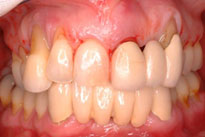
Pre-Op Photo

Pre-Op X-rays
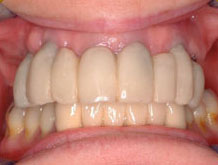
Post-Op Fixed Temporaries for Full Arch Case
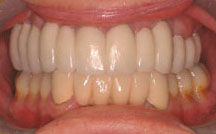
Post-Op Final Restoration

Post-Op X-rays
A new procedure called "Teeth in an Hour" allows properly selected patients without any teeth to have implants and the final restoration placed at the same appointment. The actual surgical time often will take less than one hour. Dr. Kolinski has both the training and the software to provide this service to qualified patients. Please feel free to mention this procedure to Dr. Kolinski if you would like to learn more about it.
Restoration and Long Term Maintenance
Following a final observation appointment to check for adequate healing the doctors, the implant patient will be referred to the restorative dentist for placement of the final restoration. Once the restoration is complete, we will see each implant patient to take a base line x-ray in preparation for long term follow-up care. Long term maintenance for dental implants is similar to maintenance for natural teeth. Implants need to be brushed and flossed, and professionally cleaned on a schedule that matches the maintenance of each patient's natural teeth. When patients complete their implant placement with an over-denture, there may be a feeling that these implants and restorations do not need to be cleaned. Over-denture restorations should be professionally cleaned every six months. Unless the restorative dentist requests our office to perform the maintenance cleanings, we usually refer our implant patients to their own general dentist for this care. Short follow up appointments are scheduled one year post restoration and then once after three years. These short follow up appointments allow the doctors to observe and take an x-ray of each implant to follow its long term health. Related Procedures Our extensive experience in placing implants not only allows us to place implants in the most direct and simple implant cases, but also to help patients whose conditions are more complicated. These cases may require bone grafts and/or tissue grafts. Although these cases are more challenging, often quality results are possible.Bone Grafts
When placing dental implants, there must be adequate bone available to support the chewing forces of the teeth. Adequate bone is also necessary to achieve an esthetic result. It is much easier to preserve a patient's existing bone than to reconstruct lost bone. However, patients who have infections resulting from root canal problems, cracked teeth or gum disease can be losing bone in the affected area even if they are not in any discomfort. The longer an asymptomatic infection is allowed to persist, the more bone that is lost. The deficiency of bone in the area of a future dental implant may require the use of a bone graft at the time of implant placement. There are a number of bone graft materials available, and each is selected based on the patient's individual case. The photograph and associated x-ray below illustrate a case when bone grafting would be necessary at the time of extraction and implant placement.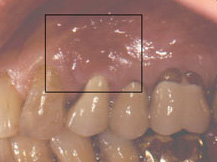
A longstanding root canal infection
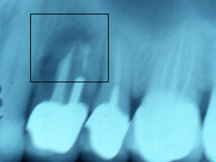
Note the dark spot around the root of the first bicuspid
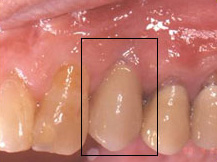
Final Post Operative Photograph
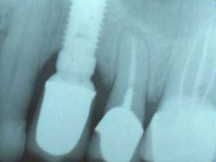
Post Operative X-ray
Asymptomatic Infection with Resulting Bone Loss
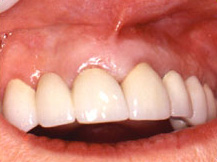 Pre-Operative Photograph
Pre-Operative Photograph
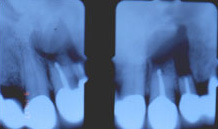 Pre-Operative X-rays
Pre-Operative X-rays
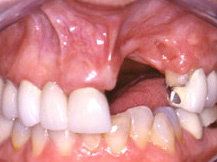 Final Post-Operative Results
Final Post-Operative Results
The above case exemplifies the esthetic consequences of waiting too long to deal with an asymptomatic infection. This type of bone loss is not easily repaired, and is only possible with the use of a chin graft or a hip graft. It is far easier and more predictable to deal with this type of problem early on.
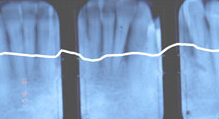
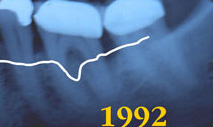
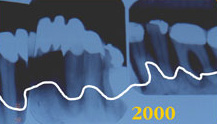
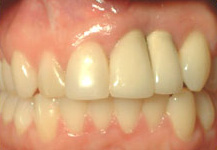
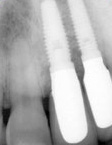
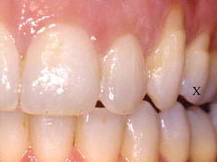
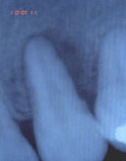
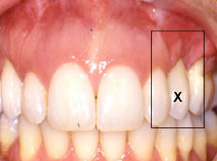
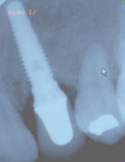
Five Year Post Op Photo
Socket Graft A socket graft allows us to fill in missing bone around the socket of an extracted tooth. A socket graft helps to anchor the implant by filling in any extra space between the dental implant and the surrounding bone with an artificial bone material. This material acts as a matrix for the patient's own bone to grow through providing long term stability for the implant.
Sinus Lift When a dental implant is needed to replace a missing upper molar, a sinus lift is occasionally necessary to create adequate bone for implant stability. Due to the presence of the maxillary sinus cavity above the upper molars, this area is commonly deficient in adequate bone to anchor an implant. This area can be grafted either by a conservative socket graft procedure as described above, or in cases where the sinus is very large, a lateral window approach can be employed.
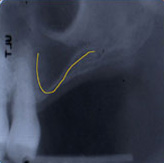
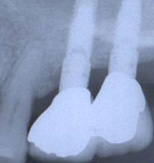
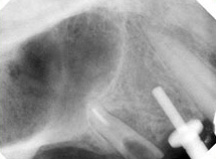
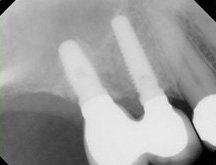
Tissue Grafting If there is a deficiency in the ridge, causing an esthetic concern, but there is adequate bone to anchor the implant, soft tissue grafts can help create an optimum appearance.
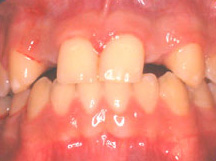 Bone deficiency before repair and implant placement
Bone deficiency before repair and implant placement
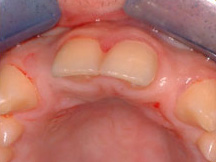
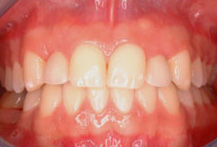 Case fully restored after soft tissue repair/implant placement
Case fully restored after soft tissue repair/implant placement
Large Case Extraction and Immediate Placement
Some patients are aware that they are losing their teeth, but they are afraid to act because they don't want a denture even on a temporary basis. This is a dangerous situation because even though theses patients may not be experiencing any pain, they are losing bone which is necessary to support future implants. For these patients extraction and immediate dental implant placement, followed by immediate temporization by their restorative dentist is a suitable option.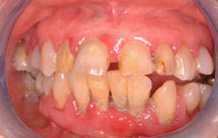 Pre-Operative Photo
Pre-Operative Photo
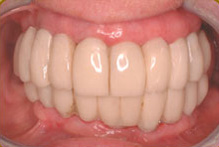 Two Week Post-Operative Photo
Two Week Post-Operative Photo
We removed these teeth and placed the dental implants during one appointment. The temporary crowns were placed by the patient's restorative dentist on the following day. The picture on the right was taken two weeks after the surgery. Note how well the tissue is healing.
